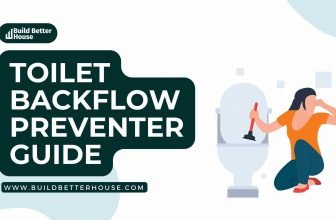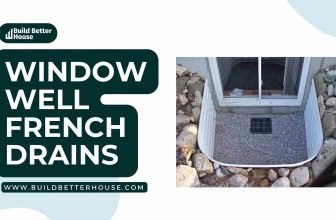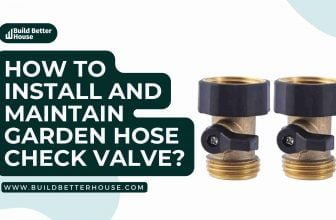How to Increase Water Pressure: Expert Tips and Techniques
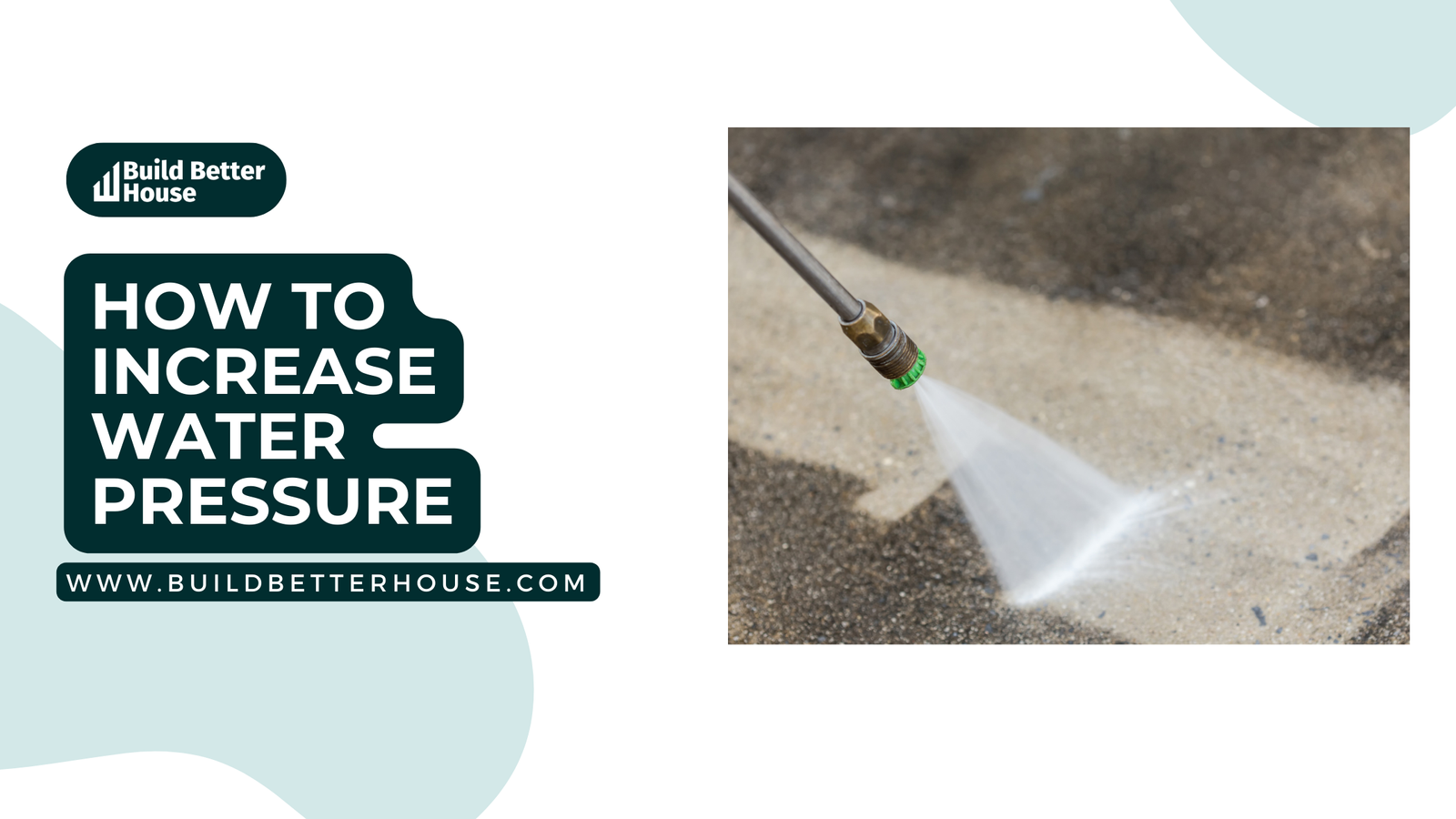
Increasing water pressure in your home is an essential task, as low water pressure can impact your daily routines such as washing clothes, showering, watering your lawn, and cleaning dishes. Understanding the causes of low water pressure and knowing how to test your current pressure will allow you to pinpoint the most effective methods to increase it. This article will guide you through practical steps and options, such as installing pressure booster pumps, to improve the water pressure in your home.
Before diving into the ways to increase water pressure, it is crucial to have a clear understanding of how your water supply system works. Whether supplied by a municipal water supply, a holding tank, or a well, the water pressure at the end of the line can be improved by following specific measures. Additionally, this article also covers some troubleshooting tips and frequently asked questions to help you maintain optimal water pressure in your home.
Key Takeaways
- Know how your water supply system works and test your current water pressure.
- Identify causes of low water pressure and find effective methods to boost it.
- Explore pressure booster options, troubleshooting tips, and frequently asked questions.
Understanding Water Pressure
Water pressure refers to the force at which water flows through your home’s plumbing system. It is typically measured in pounds per square inch (PSI) and is determined by the amount of water that can be pushed through your pipes at a given time. Normal water pressure ranges between 40 and 60 PSI, with 50 PSI being ideal.
If you experience low water pressure in your home, it can lead to issues like weak showers, slow-filling appliances, or even complete water flow stoppages. Understanding the factors that contribute to water pressure and how to properly measure it can help you identify any problems and take steps to increase the pressure if necessary.
To measure your home’s water pressure, you can use a pressure gauge that attaches to an outdoor water spigot. First, ensure all water fixtures in the house are turned off, then attach the gauge to the spigot and turn the water on. The gauge will provide an instant reading of the pressure in PSI. If your reading is lower than 40 PSI, it’s possible that the city is delivering water at low pressure, or there could be an issue with your home’s plumbing.
A common reason for low water pressure is the presence of partially closed or faulty shut-off valves near your water meter. These can restrict the flow of water, causing less pressure throughout the system. Check that these valves are fully open or replace them if necessary.
Another factor that may impact water pressure is the pipe diameter in your plumbing system. Larger pipes can deliver more gallons of water per minute, increasing the overall water pressure. However, it’s important to note that replacing your pipes can be an expensive and time-consuming process. Before considering this option, consult with a plumber to evaluate your existing system and determine if this is a practical solution for your situation.
Keep in mind that water pressure can also vary depending on the time of day and usage patterns in your neighborhood. Peak demand periods can cause pressure fluctuations due to increased strain on the water supply.
By understanding the key factors that contribute to water pressure, you are better equipped to identify and address any issues you may encounter with low pressure in your home.
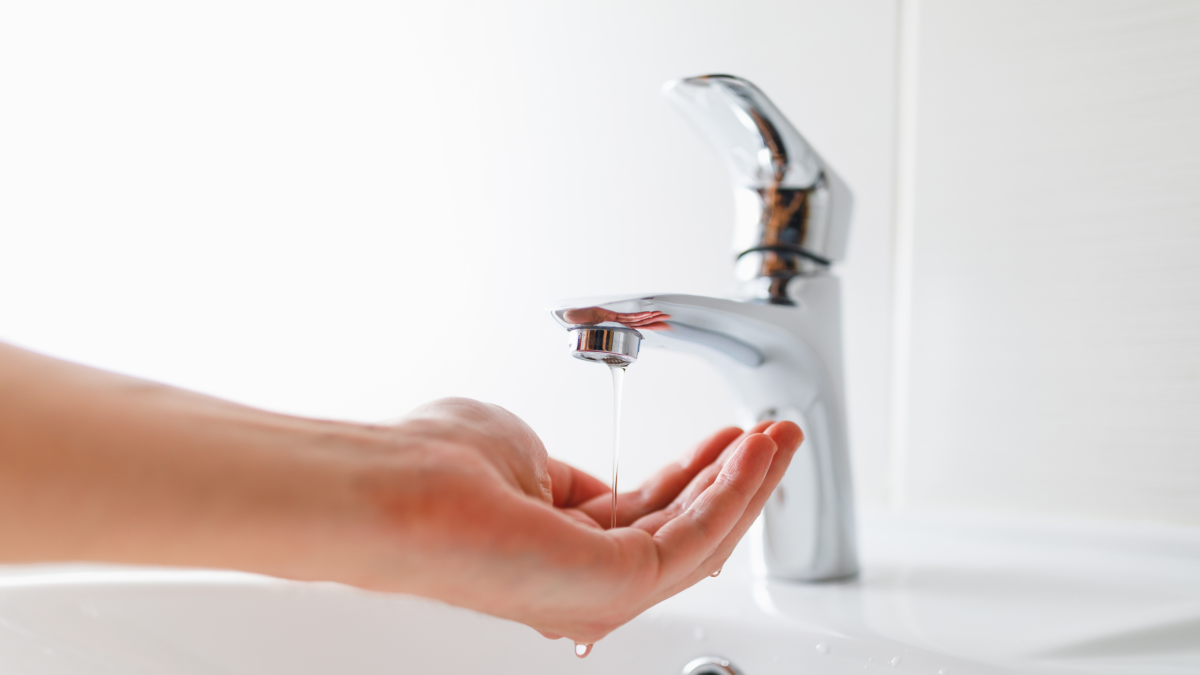
Causes of Low Water Pressure
Clogged Pipes and Fixtures
Clogged pipes and fixtures can significantly reduce your water pressure. Sediment, mineral deposits, and other debris tend to accumulate in the pipes, especially when hard water is involved. These obstructions restrict the flow of water, causing less pressure at your fixtures. Regularly clean your fixtures, such as showerheads and faucets, to remove buildup and maintain water pressure.
Leaks and Damaged Pipes
Leaks in your plumbing system can reduce water pressure by diverting water flow away from its intended destination. Damaged pipes, whether from corrosion, freezing, or physical trauma, can lead to leaks or complete pipe failure. Periodically inspect your plumbing to identify and address leaks or damage. Copper pipes are generally more resistant to corrosion, making them a popular choice for more durable plumbing.
Pressure Reducing Valves
Pressure reducing valves (PRVs) are installed in some homes to regulate water pressure from the municipal water system. If a PRV is set too low or is malfunctioning, it can lead to lower water pressure inside your home. Check the PRV setting to ensure it is configured for an appropriate pressure level, usually between 40-60 psi.
Closed or Partially Closed Water Valves
Closed or partially closed water valves can significantly affect water pressure. Be sure to check the main shut-off valve near the water meter to ensure it is entirely open. Also, verify that any other water valves within your plumbing system are open and functioning correctly.
Water Softeners
Water softeners that remove hard minerals from your water supply can sometimes contribute to low water pressure. Over time, water softeners can become clogged with sediment, impeding water flow and lowering pressure. Regular maintenance, including flushing the system and cleaning the resin bed, can keep your water softener operating efficiently and maintain water pressure.
Municipal Water System
Low water pressure might not necessarily be an issue with your home’s plumbing but could be due to the municipal water system. The city may be delivering water at a low pressure or experiencing a reduced capacity due to a break in the main water line. If you have ruled out other causes of low water pressure in your home, contact your local water utility to inquire about any potential issues within the municipal system.
Testing Your Water Pressure
Using a Pressure Gauge
To test your home’s water pressure, you’ll need a pressure gauge. You can purchase a water pressure test gauge online or at a local hardware store. Attach the pressure gauge to an outside water spigot or garden hose. Turn on the water and take note of the instant reading on the gauge. A reading of 45 to 60 pounds per square inch (PSI) indicates that your water pressure is at an ideal level. Make sure to fully open the shutoff valves near the water meter for optimal results.
Performing Simple Tests
If you don’t have a pressure gauge, you can still perform simple tests to check your water pressure. Try turning on multiple faucets at once and observe the water flow. If the water pressure decreases significantly when multiple faucets are turned on, this may indicate low water pressure. Additionally, you can check with your neighbors to see if they are experiencing similar issues with their water pressure. If they are, the problem could be with the city’s water distribution system, and you should contact your local municipality.
Remember to use a water pressure test gauge for a more accurate measurement of your home’s water pressure. By performing these tests, you will gain a better understanding of whether you need to increase your water pressure or not.
How to Increase Water Pressure
Clean and Replace Clogged Fixtures
Over time, your faucets and showerheads can become clogged with mineral deposits, reducing the water pressure in your home. To clean them, remove the shower head or faucet aerator and soak them in a mixture of white vinegar and water for a few hours. If the fixture is too clogged or damaged, consider replacing it with a new one that has a higher flow rate.
Repair or Replace Damaged Pipes
Damaged or corroded pipes can restrict water flow and lead to low water pressure. Inspect your plumbing for any visible damage or leaks. If you find any issues, consider calling a professional plumber to repair or replace the damaged pipes. Pay particular attention to older copper or plastic water main connections, as they can be more susceptible to damage over time.
Adjust or Replace Pressure Reducing Valves
Pressure reducing valves (PRVs) are installed in some homes to lower the water pressure coming from the city supply. If your PRV is set too low, it might be causing low water pressure in your home. Locate your PRV (usually located near the water meter) and try adjusting the adjustment screw to increase water pressure. If the valve is old and not functioning properly, you might need to replace it.
Open Water Valves Fully
Check all the water supply valves in your home, including the main water valve and those connected to individual appliances like your washing machine and dishwasher. Ensure that these valves are fully open to allow maximum water flow. If you find closed water valves or partially open ones, open them completely to improve the water pressure in your home.
Upgrade Your Water Softener
A water softener can help reduce the build-up of minerals in your pipes, but an old or poorly functioning unit might negatively impact your water pressure. Check if your water softener is working properly. If it’s older or not functioning effectively, consider upgrading to a new model that is better suited to handle the demands of your appliances and plumbing.
Water Pressure Booster Options
Booster Pumps
Booster pumps are specifically designed to enhance the water pressure in your home. These pumps work by drawing water from the main supply line and then increasing the pressure before delivering it to your plumbing fixtures. When selecting a booster pump, consider the following:
- Size: Ensure the pump is adequately sized for your specific water requirements. Measure your home’s water flow rate (in gallons per minute) and pressure (in pounds per square inch) before purchasing a pump.
- Type: There are two main types of booster pumps: single-stage and multi-stage. Single-stage pumps are compact and typically used for smaller applications, while multi-stage pumps offer higher pressure and are more suitable for larger homes.
- Materials: Opt for a pump made of materials that are resistant to corrosion, such as stainless steel or bronze.
Pressure Booster Control Systems
Pressure booster control systems work in conjunction with booster pumps to provide consistent water pressure throughout your home. These systems monitor the water pressure in your piping network and adjust the operation of the booster pump accordingly. Here are some essential features to look for:
- Pressure-reducing valve: This device regulates the pressure entering your home from the main water supply. It ensures that your booster pump receives water at a consistent pressure level, which helps maintain the desired pressure in your home.
- Pressure tank: A pressure tank provides additional storage for pressurized water, reducing the number of times the booster pump needs to cycle on and off. This not only prolongs the life of your pump but also helps maintain steady water pressure in your plumbing system.
- Control panel: A user-friendly control panel allows you to monitor and adjust the settings of your pressure booster system, such as the desired water pressure and pump operation.
By carefully selecting a water pressure booster pump and a compatible control system, you can significantly improve the water pressure in your home. Make sure to consult with a professional plumber before making any changes to your existing plumbing system.
Additional Troubleshooting and Solutions
Well Pump Issues
If you have a well water system and are experiencing low water pressure, it could be due to a problem with your submersible pump. Some common issues include:
- Clogs: Debris can accumulate in the pump, causing reduced flow rate and pressure. Inspect the pump and clear any clogs. You can also check for corrosion in galvanized steel pipes that may be restricting water flow.
- Pressure regulator: Ensure that your water pressure regulator is functioning properly because it can cause low pressure if it’s not.
- Electric pump: If your well uses an electric pump, verify that the power supply is connected, and the pump is functioning optimally.
It’s a good idea to consult with professional plumbers to properly troubleshoot and fix well pump issues.
Installation of Expansion Tanks
An expansion tank helps manage water pressure fluctuations in your plumbing system. Installing an expansion tank can maintain a consistent water pressure level and prevent issues like water hammer. Here’s how it works:
- The expansion tank adds extra volume to your plumbing system, allowing water to expand without affecting the main water supply.
- It helps maintain a consistent water pressure, ensuring reliable flow rates in showerheads, sink faucets, and garden hoses.
- Make sure to choose an appropriately sized expansion tank based on your residential water pressure needs and pipe size.
Contact your local water department or a professional plumber for guidance on selecting and installing the right expansion tank for your system.
Water Hammer Prevention
Water hammer is a sudden increase in water pressure caused by the abrupt stop of water flow in pipes. It can lead to weak shower flow, loud noises, and potential damage to your plumbing system. To prevent water hammer, consider the following solutions:
- Water pressure regulator: Ensure that your plumbing system has a functioning water pressure regulator (PRV) to maintain ideal residential water pressure and avoid water hammer.
- Water-pressure booster: If you have low water pressure, install a water-pressure booster to improve flow rates and prevent water hammer.
- Shower valve replacement: Replace old or malfunctioning shower valves with new ones that have adequate flow control to prevent sudden pressure changes.
- Pipe size adjustment: Review the pipe sizes in your plumbing system and adjust them as needed to match the required flow rates, reducing the risk of water hammer and blockages.
By addressing these well pump issues, installing expansion tanks, and taking measures to prevent water hammer, you can effectively increase water pressure and improve your home’s plumbing system performance. Remember to consult with professional plumbers to ensure proper installation and maintenance of any new equipment or materials you decide to add to your system.
Frequently Asked Questions
How can I boost the water pressure in my pipes?
To boost water pressure in your pipes, start by checking and fully opening the shut-off valves near your water meter. You can also clean any sediment buildup in pipes and fixtures, like showerheads, to allow water to flow more smoothly. If these steps don’t work, consider installing a pressure booster pump to enhance water pressure.
What are some ways to improve well water pressure?
In a well system, maintaining an optimal pressure tank setting can help improve water pressure. Also, examine the pressure switch for proper functioning and adjust it if necessary. Ensure the well pump is functioning correctly, and if the problem persists, consider upgrading the water well pump or adding a pressure booster.
How do I enhance water pressure in an older home?
Enhancing water pressure in an older home involves checking for any partially closed shut-off valves and opening them fully. Inspect the pipes for corrosion and replace them if needed. Sediment buildup can also cause low pressure, so clean your fixtures and pipes regularly. Lastly, installing a water pressure regulator can help you control and maintain optimal water pressure.
What steps can be taken to increase apartment water pressure?
If you’re experiencing low water pressure in your apartment, first notify your landlord or building management as the problem may affect others in the building. Check the shut-off valves, and keep them fully open. Cleaning showerheads and aerators can help remove mineral deposits that restrict water flow. If necessary, discuss the possibility of installing a pressure booster or pressure regulator with your landlord.
How can I amplify water pressure in my bathroom?
To amplify water pressure in your bathroom, clean your showerheads and faucet aerators regularly, as mineral deposits can cause water flow restriction. Ensure the shut-off valves are fully open, and if you have a pressure regulator, adjust it according to your preferred water pressure. As a last resort, you can consider installing a pressure booster pump.
Is there a device or method to adjust water pressure in a house?
Yes, you can use a pressure regulator to adjust water pressure in your home. A pressure regulator is a device installed on the main water line that helps control the water pressure entering your house. Adjusting the pressure regulator can help you achieve a comfortable and consistent water pressure level throughout your home.



